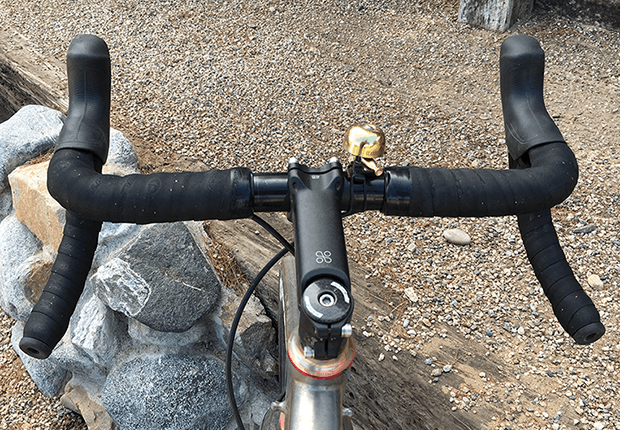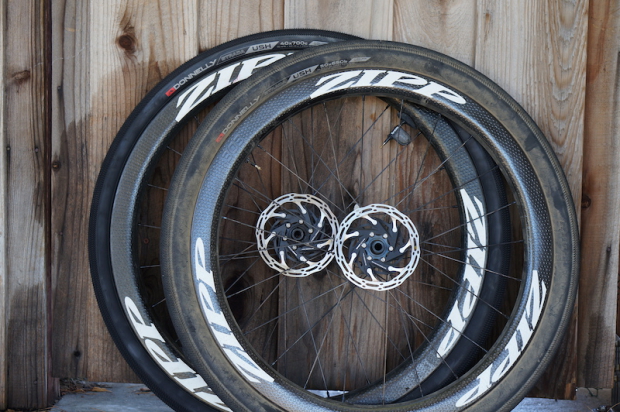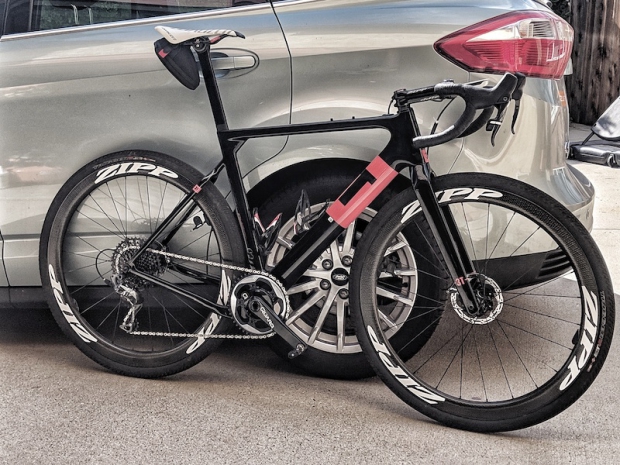OPEN WI.DE.: Perfect for California Gravel
This is my second review of a Gerard Vroomen frame this week. I started with the 3T Strada, that company’s aero road bike. Mr. Vroomen part-owns both 3T and OPEN, and today I’m writing about the OPEN WI.DE.
Gravel enthusiasts will know of OPEN Cycles, and the very popular OPEN UP. But gravel cycling has gone the opposite way that I thought it would as I recollect my thinking from five years ago. Back then I thought we’d start with our tires wide, maybe 38mm or 40mm, and migrate narrower as we all got better at bike handling, ending up at 35mm or maybe 32mm. But the opposite has happened, and this bike I’m writing about now is an example of that.
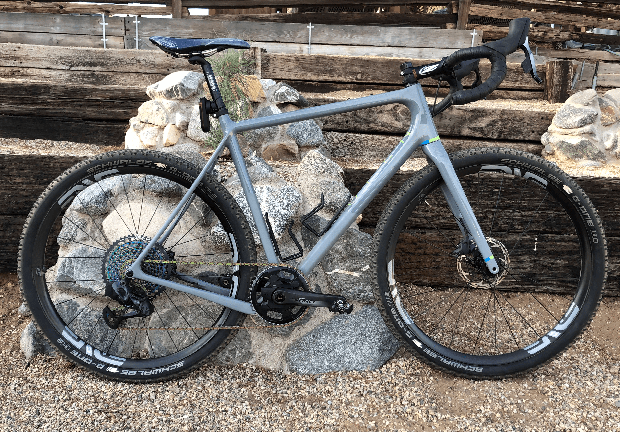
The path I’m describing hasn’t happened everywhere. Gravel bikes are the responses to the gravel you have. That you have. In the Southwest where I live it’s sandy, rocky, hilly, and then it’s paved. What I’ve found in my riding is that the fatter the tire the faster I go; the surer my ride; the less I’m falling over onto a rock or into cactus. So, I plunked down my digits and bought this frame, because of the tire clearance.
I paired the frame with a set of ENVE G27 wheels in a 27.5” diameter, and for tires I mounted a pair of Schwalbe G-One Bites. This is an all-round tire, but it’s fat, 2.1”, which is 53mm. So far, in a half-dozen rides, I’m extremely pleased with my purchase decision. It’s really not positioned as a gravel tire as well as I can tell. It’s not supposed to be a good tire for the road, but my experience is that it’s fine on tarmac. My only gripe was I had to put a little more sealant in the tire to inoculate it from overnight leakdown.
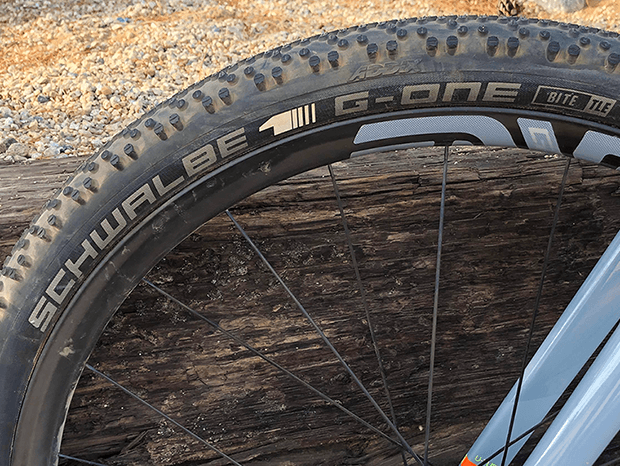
I’m going to talk about handling in a bit, and this is the big takeaway for me. But first, to continue the description, I chose what SRAM calls its “Mullet Config,” an Eagle 12-speed 10-50 behind the crank and a SRAM Force 1x Etap AXS from the crankset forward. My only current regret is the 44-tooth chain ring on the crank – it’s rideable but the clearance between the ring and the frame is not quite adequate. I’ll be replacing this with a 42-tooth ring.
For me and for my riding, gravel requires a wide gearbox and I don’t mind the gear jumps in gravel as much as I would mind the same jumps in tri or even road. The shifting is extremely precise, as is the hydraulic braking, and I’ll write elsewhere about this groupset. Plus, if you look at the Eagle stuff, it’s got that tortoise shell coloring and that’s pretty cool.
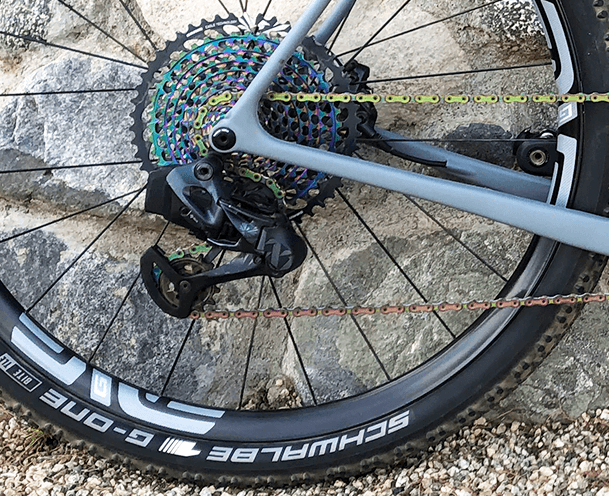
Not long ago I wrote about a handlebar from Zipp, the XPLR. This gravel bar had the virtue of a flare in the drops without the flare mandating a cant in the brifter. 3T has a bar that also offers this; a higher-end bar; carbon, more expensive, and also with an angle-in at the terminus of the drops, which makes me feel I’m a little less likely to get hooked when someone rides past me. I like the narrower hood position, but I like the wider drops position during descents. It’s also an extremely shallow drop bar (110mm) position, which I prefer for gravel, and I double wrap the bar below the hoods for those long bumpy descents typical of my area.
I like to ride the drops on long gravel descents, because I feel less like I’m going to go arse-over-teakettle if I hit a big bump while careening downhill with my hands on the hoods. This bar is called the Superghiaia. (The bar has a great shape, but way too many consecutive vowels.) Mine is the 40cm size, and I believe that might be the only size that’s shaped like the one here (I think the 44cm size may not have that same shape, oddly). Because it’s a moderate-not-short reach (90mm) I ride a centimeter shorter stem than I normally would.
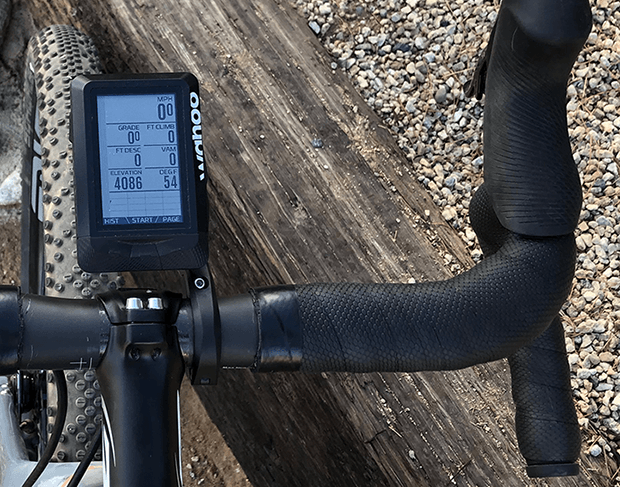
Let’s talk a little about geometry. I feel there are 2 geometries in road and gravel that make sense to me. One is for a 700c-wheel bike to be outfitted with a larger tire, say, between 35mm and 45mm. That geometry needs to consider the ramifications of that bigger wheel diameter, and I mean in front:center, chain stay, bottom bracket drop, shoe overlap. The head angle has to be shallower, the fork needs a lot of offset, the bottom bracket drop (from the wheelbase line) should be greater, chain stay longer.
The second kind of geometry works for: 1) standard road bikes; 2) fat tire gravel bikes like this one here. That might seem weird to you, that road + fat tire gravel require one geometry; and moderately wide gravel requires another. But this bike, the OPEN WI.DE., at least the way I’ve built it, has 27.5” wheels (aka 650B, aka 584mm bead diameter).
The metric that determines geometry type is wheel radius. Below, I’ve rolled out the circumferences of 3 of my bikes. That piece of red tape (in the bottom left of the image) is how my 700c with 38mm tires rolls out (the way my Litespeed gravel bike is currently configured). There's a piece of tape farther in that alcove, where I started each rollout; the red piece of tape you seem marks the greatest tire circumference when rolled out in a straight line. The shortest rollout is a Cervelo P-Series with 25mm tires. In between is the OPEN WI.DE. with 53mm tires. (These are marked with black tape.)
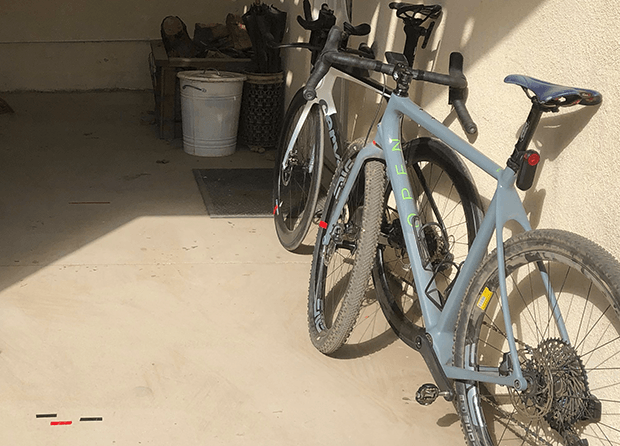
The differences in wheel radius between my bikes might not seem like much, but that small amount does affect handling in a big way. What you discover with this bike I'm reviewing here, as I’ve built it, is how much it handles like a road bike. In fact, my Litespeed gravel bike had 30mm Schwalbe Pro Ones on it until I swapped in the 38mm tires last week. I’d say the OPEN WI.DE. as outfitted here handles almost exactly like that Litespeed with the 30mm tires. They're very similar while riding both in and out of the saddle.
The outlier is the Litespeed with 38mm tires. All of a sudden it’s less nimble, and with shoe overlap. Mind, it’s still a very nice bike, but when you ride the OPEN WI.DE. I see the difference between a good bike and a truly superior one. (Were I to put the OPEN's wheel/tire combo on the Litespeed, I'm pretty sure I'd get that great handling back; but this Litespeed I have doesn't offer quite enough clearance for the tires.)
This bike as outfitted weighs in at 18 pounds and change. This is as you see it, with a Garmin Varia on the back, a Wahoo ELEMNT on the front, water bottle cages and all in a size Large. The only thing not on the bike is the rear behind-the-saddle bag and full water bottles. The quoted weight does include the Speedplay Sizr pedals.
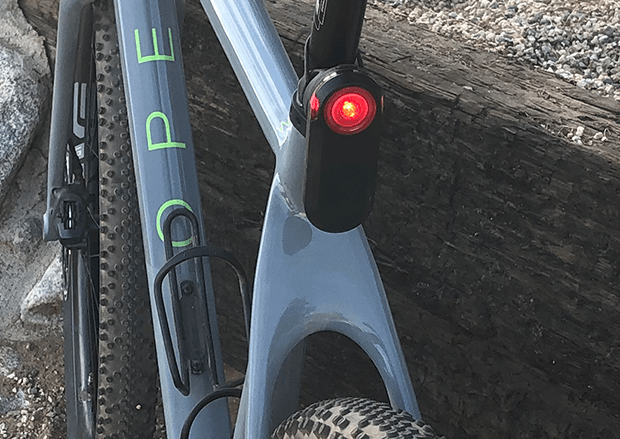
About the pedals, are the Sizr’s the best gravel pedal I could find? Debatable. Is it the best at stepping in with speed and certainty, CX style? Certainly not. The lightest? Nope. Cheapest? Not even. Then why am I riding them? Because this is the offroad pedal that allows me to set the precise engagement points for both inward and outward rotation. This is the critical feature for me. Should it be for you? Can’t say. I’m just telling you why I've chosen them.
Speaking of the electronics, why do I have a Garmin Varia on this bike? Because on my gravel rides the loops contain a lot of pavement. We have long, straight, lonely, 2-lane, shoulderless roads we ride on, and you get from one road to the other via offroad stretches. So, even with gravel we still need the Varia. I’ve got the ELEMNT on there for a purpose, which is to demonstrate that the ELEMNTs you own, if you own them, are now Varia-compatible. This functionality you get with the latest firmware update.
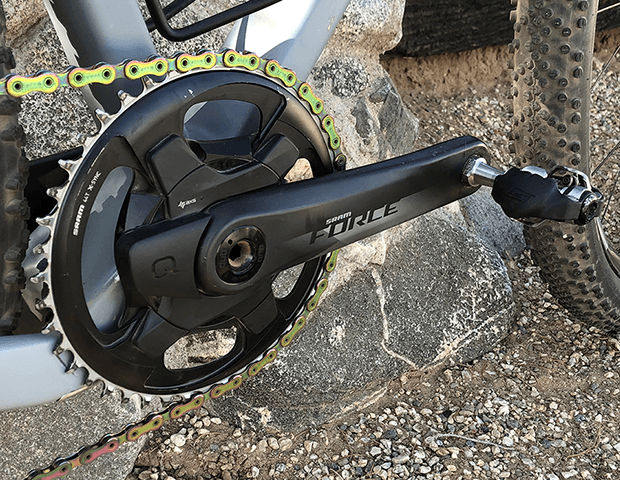
This particular AXS Force crankset I have has a Quarq power meter built in, and you’ll see that on the ELEMNT as well. Both SRAM and Shimano now have power meters that could arrive original equipment on bikes. It’s my guess these component goliaths will try to push the market in this direction: PMs built into cranks that already come on the bike you buy.
If you look at our recent poll you’ll see that Quarq sits only below the Favero Assioma pedal as the next power meter you’ll likely buy, that’s Quarq exclusive of PowerTap (which Quarq now also owns). I think some of you who voted for Quarq expect to get your power meter OE. Shimano is way, way behind on offering PMs as original equipment, but Quarq got a several-year head start. It seems logical that Shimano will eventually close that gap.

This is not an inexpensive bike. The frameset itself is $3,200 and how much this bike costs as I’ve pieced it together I have not calculated and I’m shielding my eyes from my credit card bill. I’m reviewing it mostly as an (expensive) thought experiment. I really like SRAM’s AXS groupsets, but the 2x options, while getting me down to 1:1 shifting (33×33) still don’t give me a low enough gear. A 44×50 is a 23” gear. This is what’s on this bike now, and that’ll go to a 22” gear when I put the 42t chain ring on.
The 33×33 on the AXS 2x groupsets give me a 26” gear, pretty low, that’s pretty good, but that 22” gear I'll have this 1x and the Eagle cassette gets me up everything I’ve got the cajones to attempt.
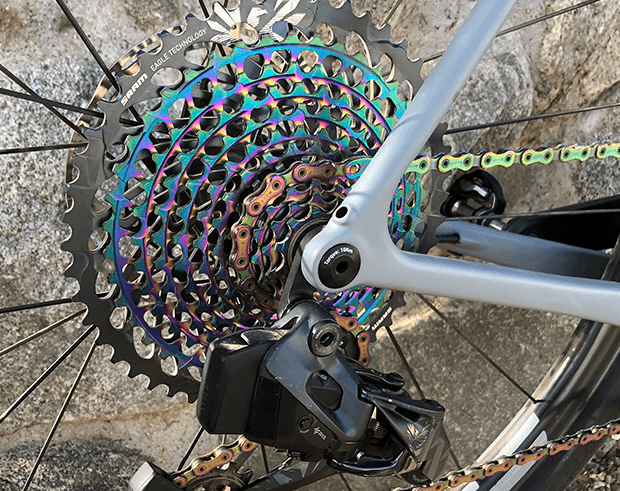
Whatever this bike costs as spec’d, it’s worth every penny if you have every penny, and if you don’t I think it’s a template for how to make the affordable gravel bike of the future. It’s perfect for Southwest gravel, but in my opinion only if you’re riding your fatty tires on a 27.5” wheel. Here’s the OPEN WI.DE. Here is SRAM's discussion of the Mullet groupset I’m riding.
I’m very impressed with the ENVE G27 wheelset, and the Schwalbes went on hands-only.
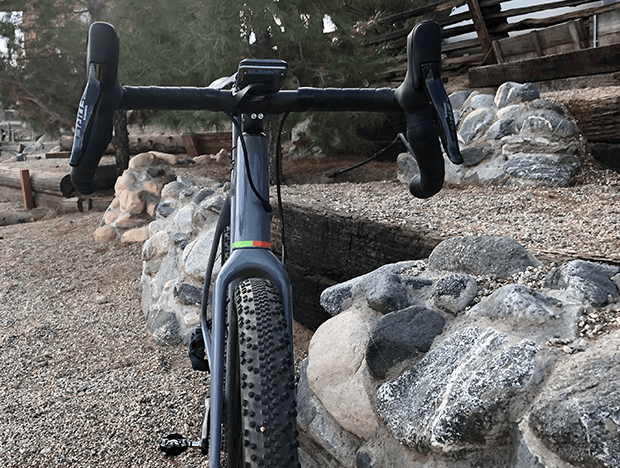
Here’s the link to the 3T Superghiaia gravel bar. Mine is the 40cm size, and I believe that might be the only size that’s shaped like the one here (I think the 44cm size may not have the same shape, oddly).
As for the saddle on that bike, it’s old, broken in, fits my patootie, and not for sale.


